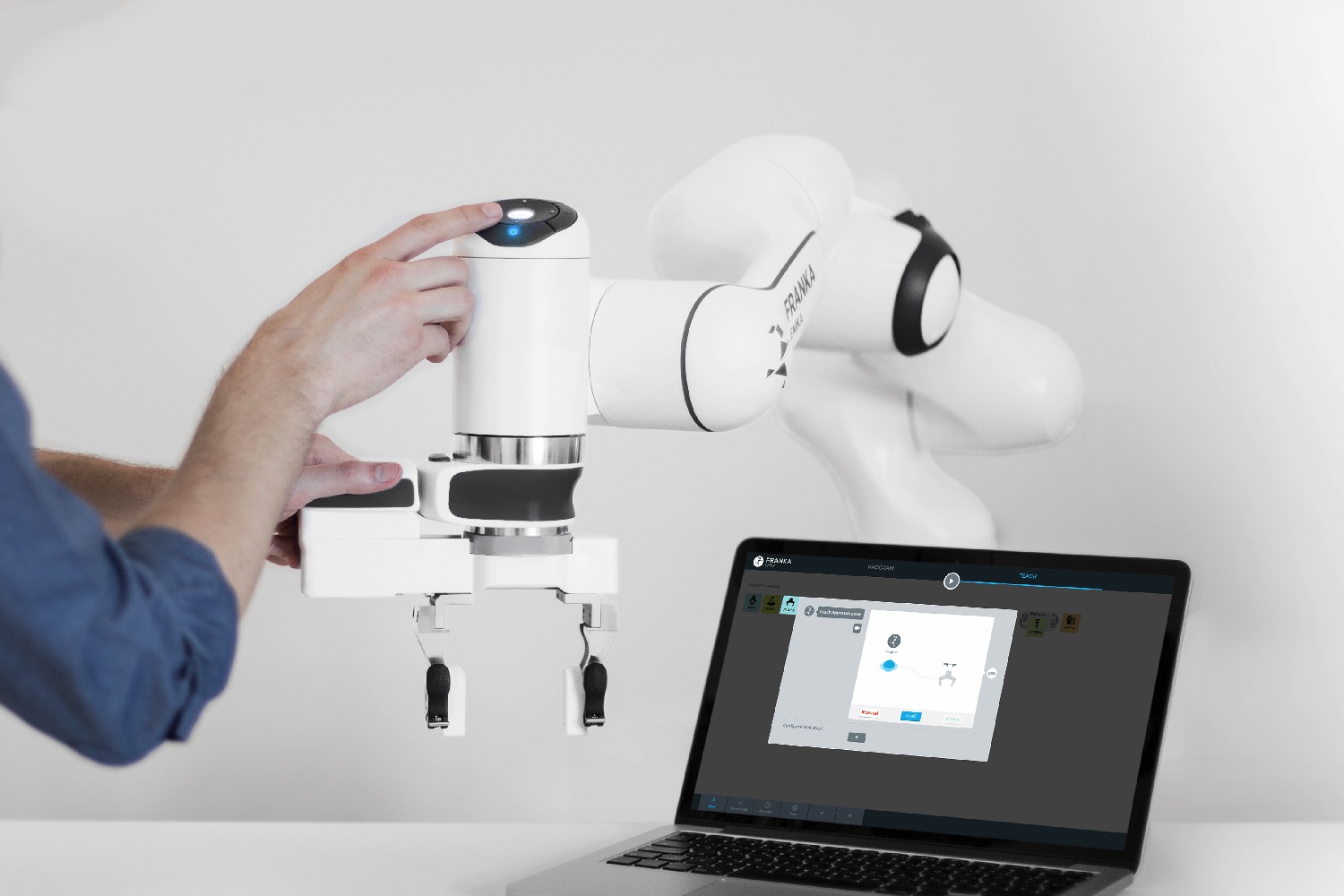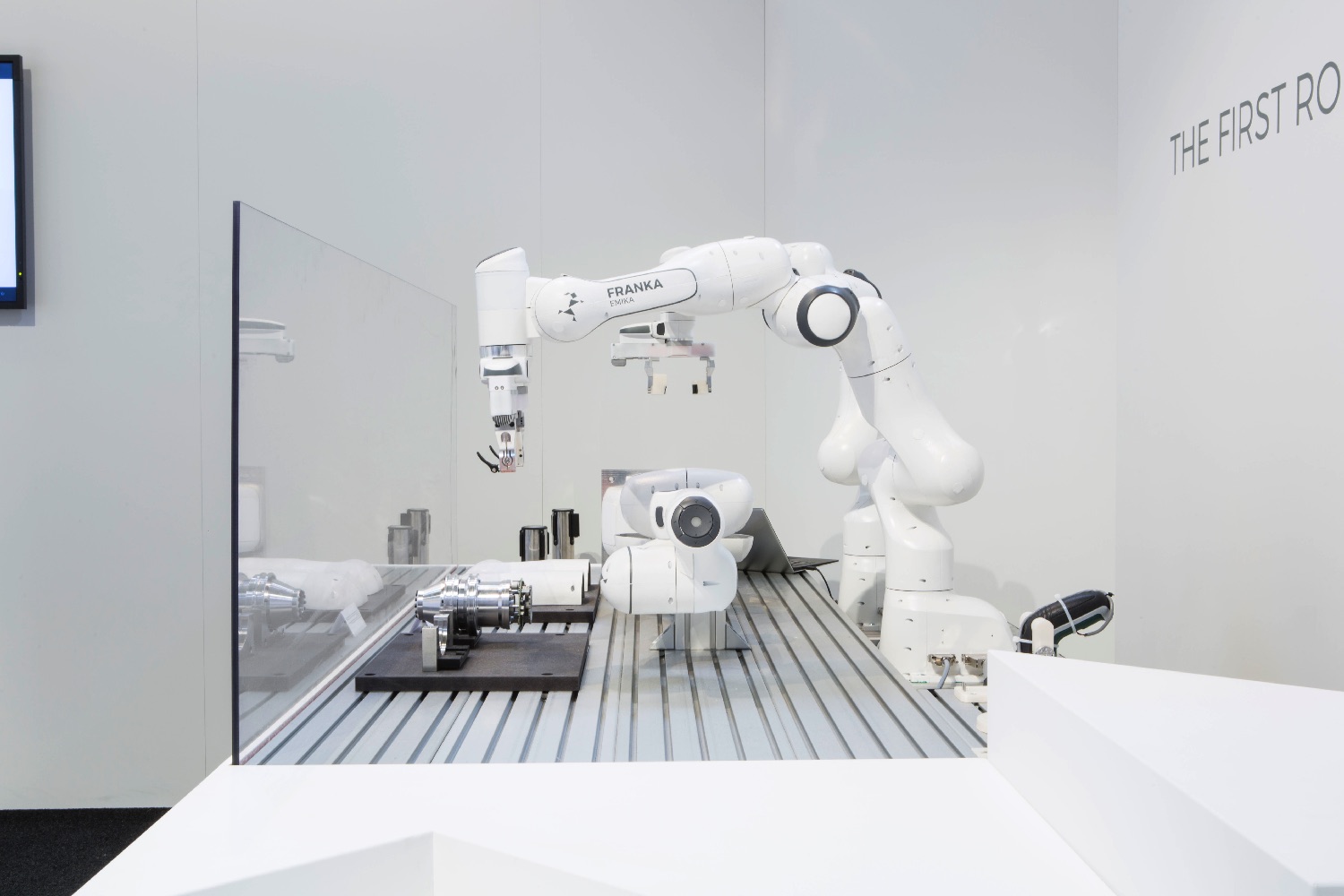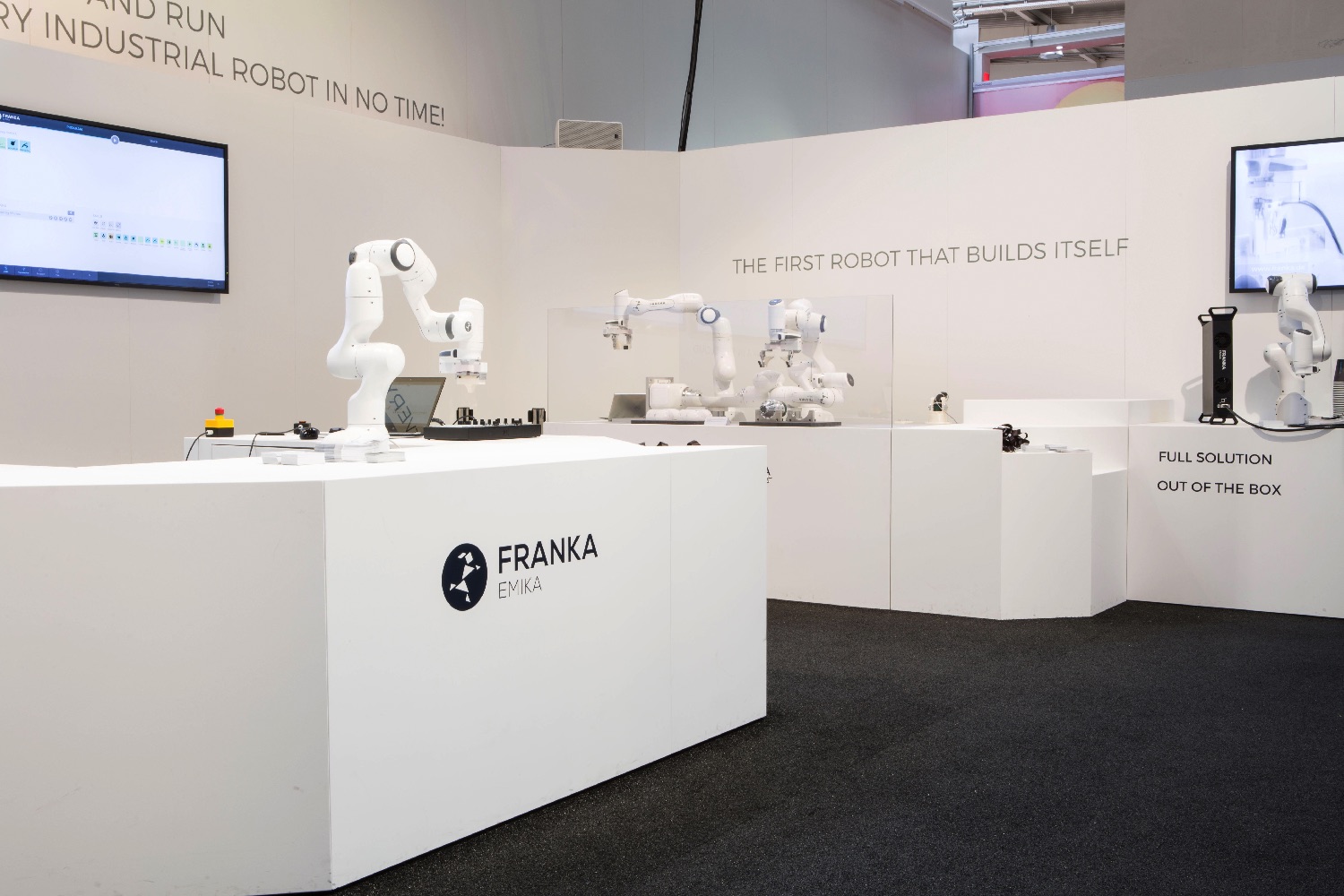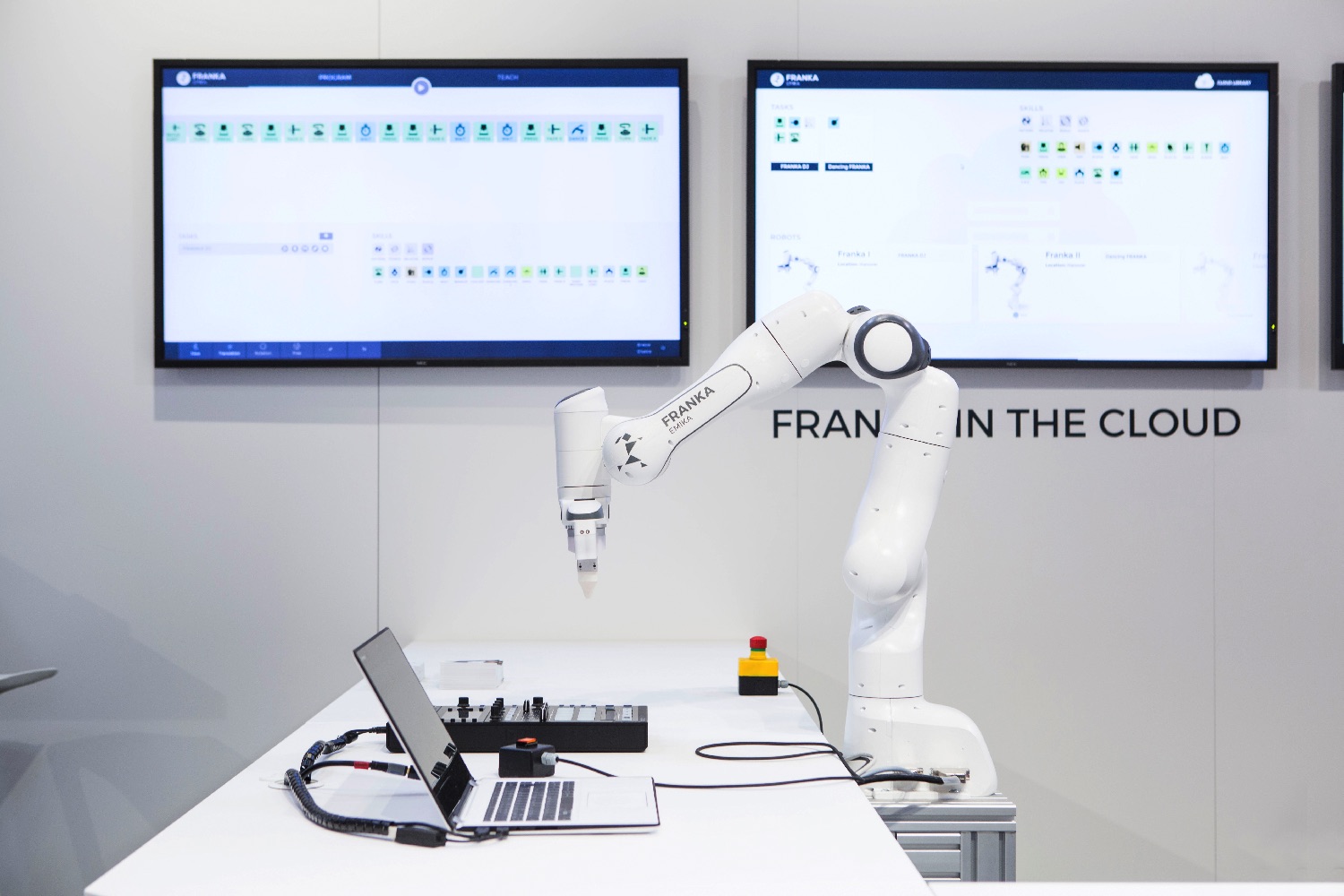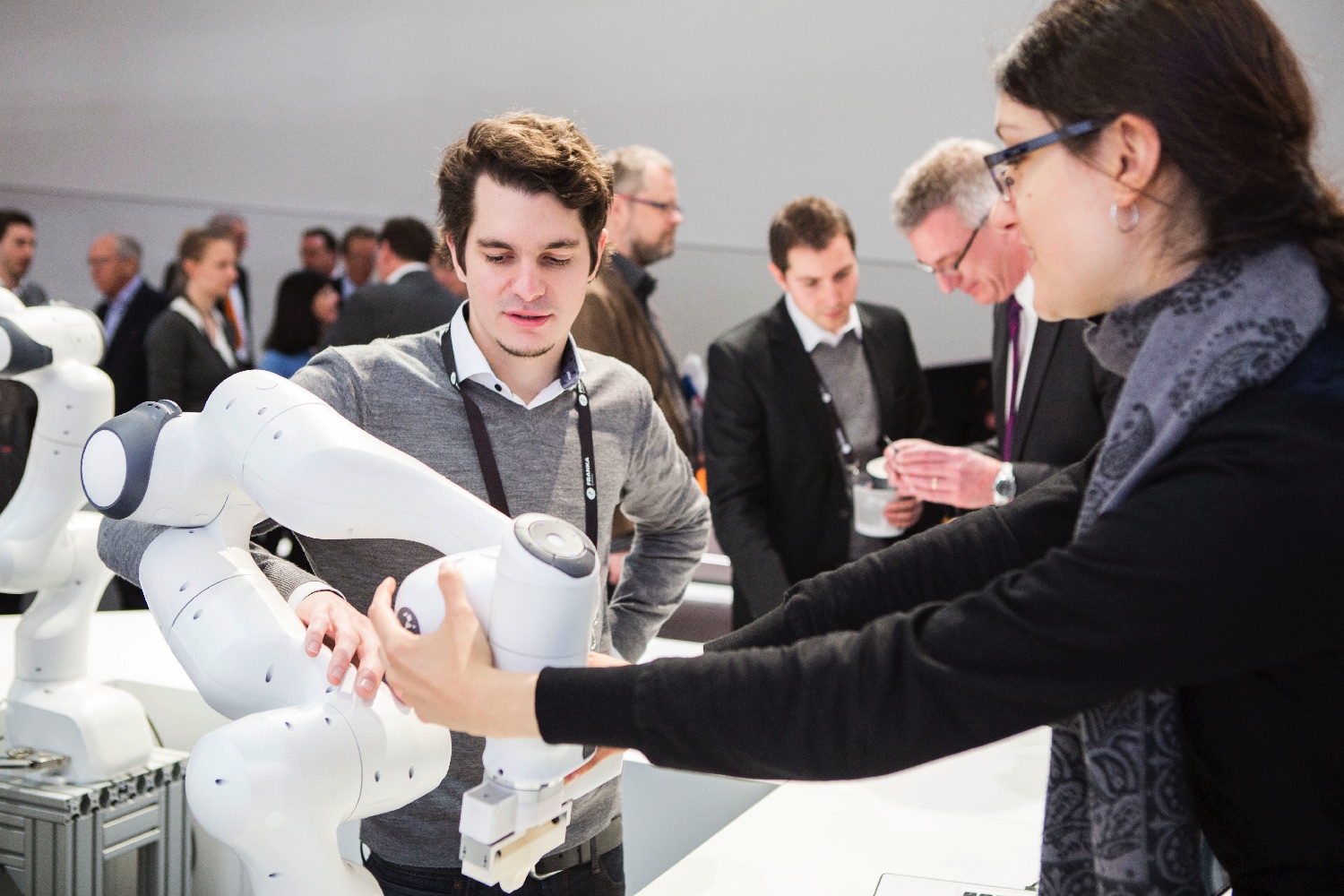This may be the year that helps change that dangerous reputation, however, thanks to Munich-based startup Franka Emika, which will this year ship an impressive new robot arm that can not only work safely alongside people, but is surprisingly dexterous — able to even open and close bags, and use cable ties reliably — as well as incredibly easy to set up and program.
“It is the robot assistant for anyone, and it can do things that no other robot is capable of,” creator Sami Haddadin told Digital Trends. “It is extremely affordable, can be used by anyone, is safe, and has unrivaled performance.”
In terms of specs, Franka boasts torque sensors in all seven of its joints in an effort to provide “human-like arm agility and sensitivity.” It also has an 80-centimeter reach, payload of 3 kilos, and 0.1 millimeter accuracy. While those features are par for the course with other rival robots, the combination of simple app-based programming and the ability to carry out challenging (for a robot) tasks like drilling, screwing, and buffing suggests that Franka is well ahead of the competition.
So precise is Franka, in fact, that it can actually help assemble and build other Frankas — possibly one day leading to the dream (or nightmare?) of a Franka Emika factory staffed by Frankas.
“The basic technologies [have] been under research and development for more than 20 years at the German Aerospace Center Institute of Robotics and Mechatronics, aiming for the most advanced ultra-lightweight space manipulators equipped with force feedback for the operator,” Haddadin continued. “Our institute is still very well known in the field as one of the leading robotics research labs … We saw that our technology and vision for robotics was unique and it would be possible that we actually had everything together to take the shot for our first product.”
The last revolutionary thing about Franka Emika is the price. The basic out-of-the-box package, including the arm, control box, and user interface will be offered for 10,000 euros (around $10,000), or even a little less — while the fully-stocked version will cost a couple of thousand euros or dollars more. Prices depend on which additional skills you purchase, via an App Store.
At the top end of the budget is the Franka Emika model designed for researchers, which costs around 16,400 euros ($17,373) and includes access to low-level control and complex software models of the robot. While these prices are certainly more than you’ll pay for a home robot like, say, a Roomba, they are astonishingly cheap for an industrial robot.
Shipping is set to begin in early summer.
